The photos in my closet: The story behind a wartime air crash in rural N.B.
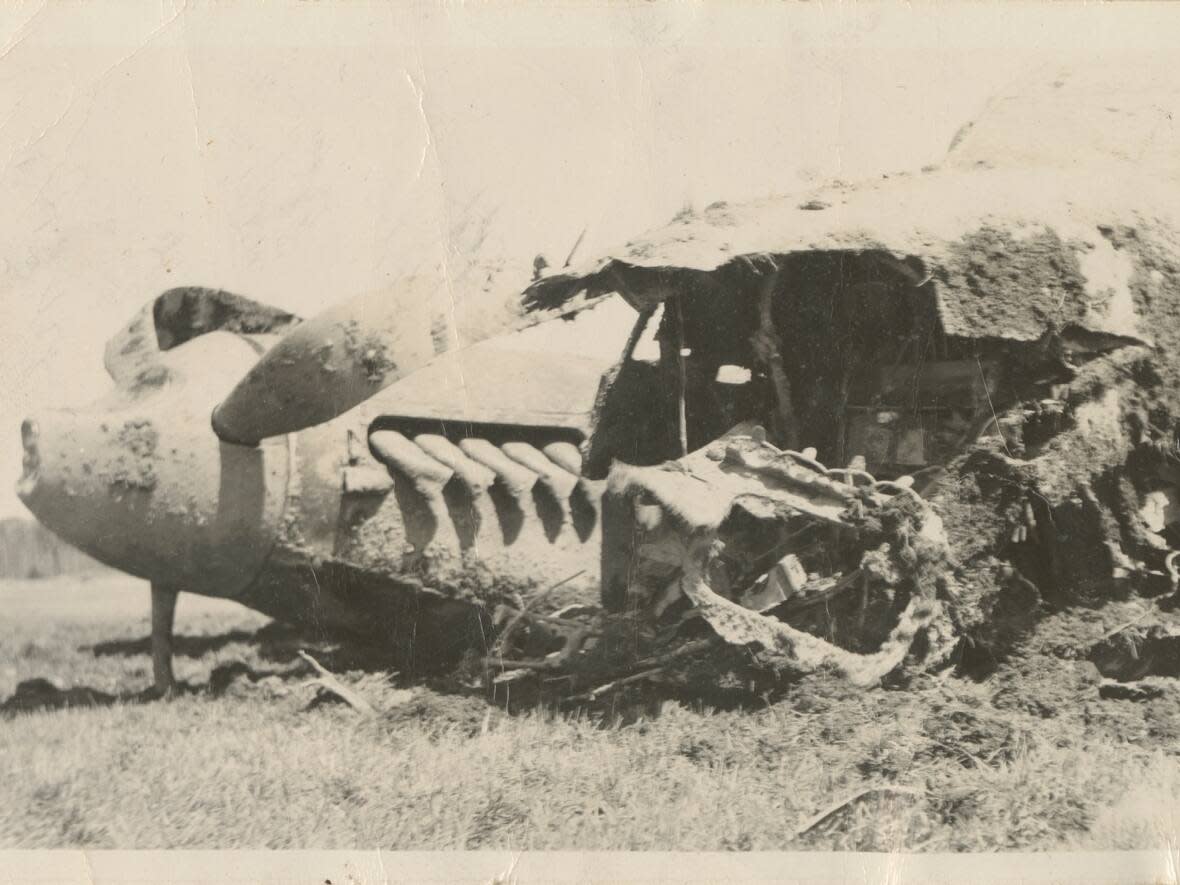
In the spring of 1945, my grandfather, Bert Webb, took photographs of a warplane that crashed near his home in Tracy, a rural community about 35 kilometres south of Fredericton.
I stumbled across them in a box in my closet at home and thought: I wonder if I can find out the story behind that crash? Here's what I discovered:
The morning of April 23, 1945, was clear and crisp when Flight Officer Eric Alfred Whitworth and Sgt. Ernest Arnold Chapman squeezed into the tight confines of their de Havilland Mosquito.
The young New Zealanders were about to embark on another training flight from RCAF Greenwood in Nova Scotia, where they were both stationed as part of 8 Operational Training Unit.
Whitworth, the pilot, was no newcomer to the business of training. He'd been in Canada for nearly two years, got his pilot wings as part of the British Commonwealth Air Training Plan, or BCATP, then trained to become a flight instructor.
Chapman was his student today, newly graduated from Wireless School in Calgary.
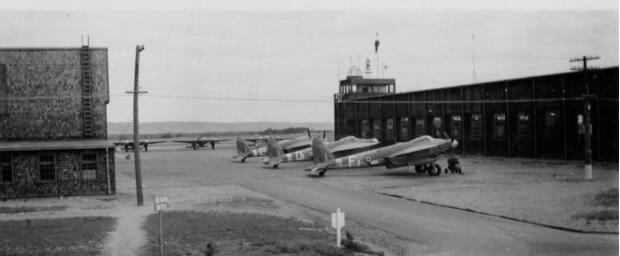
He spent a year there learning the many tasks the observer had to master to do the job well, including navigation.
Today's flight seemed routine on the surface — a flight across the Bay of Fundy to New Brunswick for a cross-country exercise and then back — in clear, sunny skies.
The two young men likely never considered the flight would end in a New Brunswick farmer's field, their aircraft a battered wreck.
Dangerous business
Training aircrew was a dangerous business.
During the five years Canada trained crew for service in the Second World War, 856 were killed.
Crashes were common, and RCAF Greenwood itself lost 52 aircrew in the war years.
John McNarry, the president of the Commonwealth Air Training Plan Museum in Brandon, Man., said in a phone interview that "there are cairns all over the place" in Canada, tributes to those who lost their lives in crashes.
But the opportunity to learn to fly attracted many young men who enlisted.
"In the years leading up to World War II, aviation was a big thing in the public's mind," McNarry said, and anyone with "any inkling to fly" wanted to be in the air force.
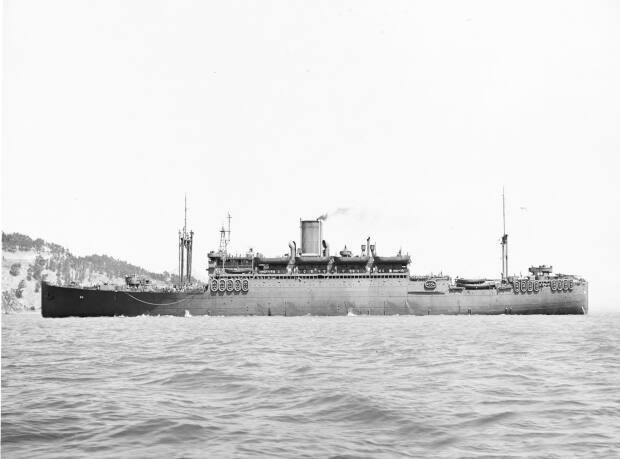
Whitworth was one of those young men.
He was still attending school in Dunedin when war broke out in 1939, and became an Air Training Corps cadet, suggesting he already had an interest in flying.
He eventually enlisted at RNZAF Taieri, just west of Dunedin, in September 1942, where he completed elementary flying school.
In mid-July 1943, his life changed abruptly. Whitworth boarded the troop transport USS Wharton in Auckland and set sail for San Francisco, arriving in late August — but his final destination was Aylmer, Ont., and 14 Service Flying Training School, as part of a group of airmen designated Course 87.
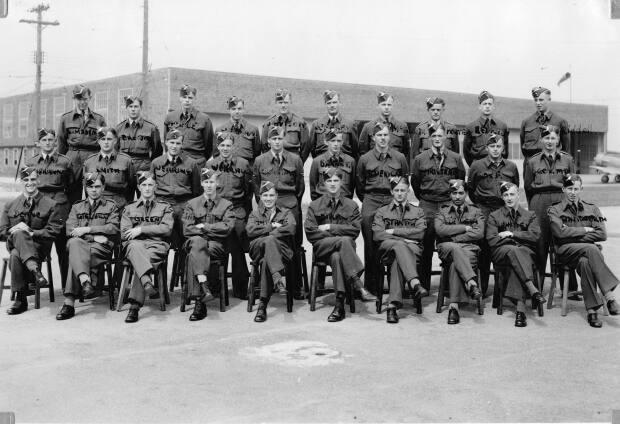
Despite thousands of New Zealanders training in Canada, the Air Force Museum of New Zealand has just one photograph of New Zealand pilot trainees at Aylmer. Astonishingly, it is of Course 87, with the last name of each trainee written in ink on their image.
He's pictured in it, on the far right, front row, with an easily legible "Whitworth" written on his chest.
Life in training wasn't easy. It was serious business and the men performed under strict discipline, expected to follow the rules to the letter.
Men like Whitworth also suffered from culture shock and homesickness.
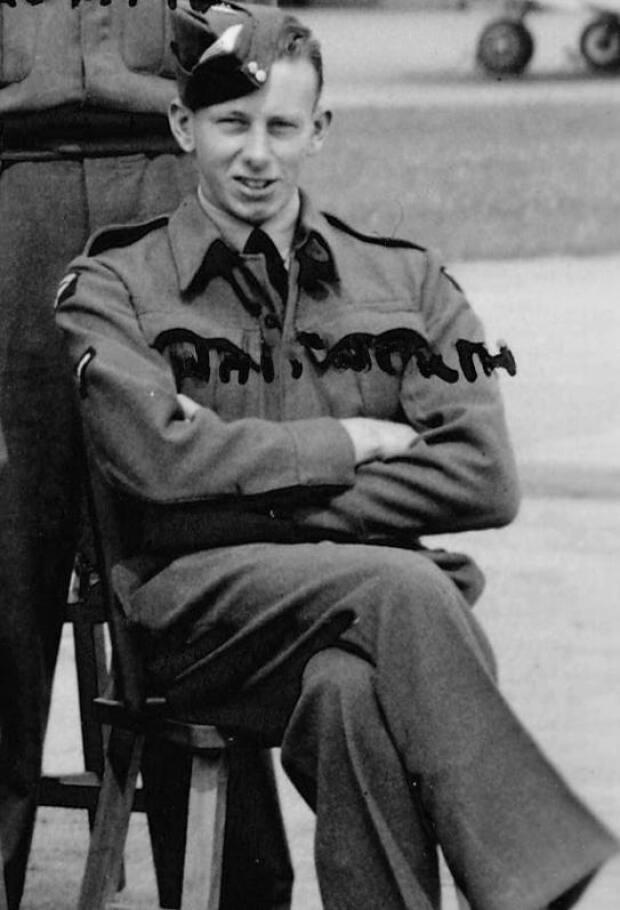
During his time in southern Ontario, he made several trips to an Australian and New Zealand Army Corps club in Detroit.
The owner of the club, an ex-pat New Zealander named Mrs. D.E. Roberts, wrote a letter to the editor of the Dunedin newspaper The Otago Times to describe the club.
"Most of the lads come from training camps in Canada," she wrote, "They got 48- and 72-hour passes and 10 to 14 days embarkation leave when they finish their course and they usually spend this in the States. Our club is quite a family one, and right on the border and the boys can return many times.
"So, you see, we get to know them very well."
Roberts said the club kept a good supply of Australian and New Zealand newspapers, and "the kettle is on the hob all day."
"It has been a privilege to send them on their way a little happier and less lonely."
She identified Whitworth as one of the Dunedin men whose photographs were pinned to the club's "Rogue's gallery" bulletin board.
A fine pilot
Despite the homesickness, Whitworth clearly excelled at his job.
He graduated with his pilot wings on Nov. 26, 1943, and his superiors must have noted something special about him.
They recommended him to go to RCAF Trenton's 1 Flying Instructor School, one of three schools established that August to train more instructors.
Canada's flight training program struggled to provide enough instructors to teach the thousands of recruits learning to fly in bases across the country.
According to F.J. Hatch's study of the program, Aerodrome of Democracy, the position may have come as a disappointment for Whitworth.
"The flying instructors of the BCATP must be counted among the unsung heroes of the war," Hatch wrote.
"Chosen from the best pilots available, often restless and ambitious for action on a fighting front, most of them keenly felt the frustration of their work. Some sought escape, and a posting overseas, by deliberately committing misdemeanours such as flying a Tiger Moth, or even an Anson, under a bridge. But the majority performed their task conscientiously if somewhat reluctantly."

So that is how Whitworth found himself on April 23, 1945, with the war in Europe winding down, in RCAF Greenwood and 8 OTU, shepherding a young navigator on a cross-country flight over New Brunswick.
Their aircraft, a de Havilland Mosquito, was a high speed twin-engine bomber and reconnaissance aircraft.
Affectionately called a "Mossie" by its crews, the aircraft was of unusual construction, made mostly from plywood.
One of the fastest warplanes in service, this particular plane was one of the first built in Canada and used American engines instead of the original British version.
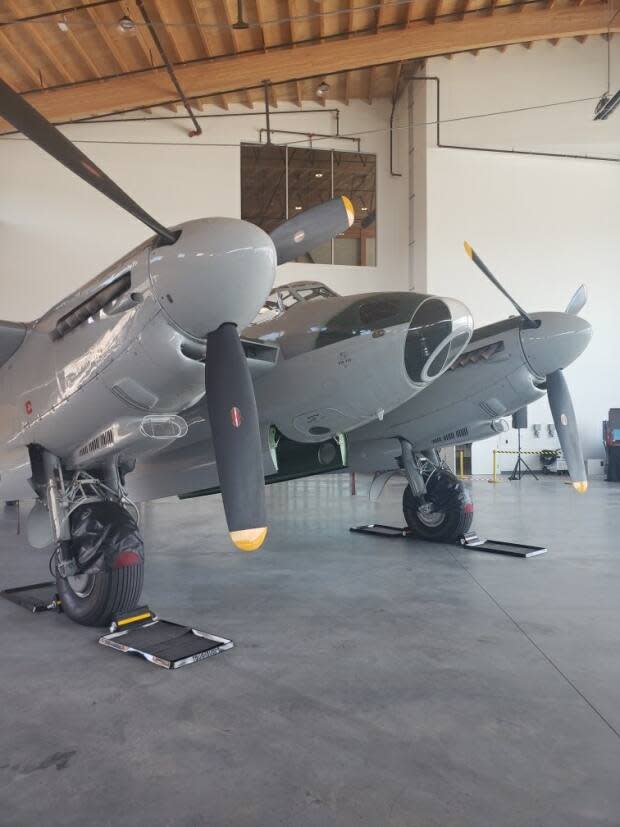
The exercise that day was to navigate to various map co-ordinates and return home. The crew had already completed most of the trip and was heading east again when, just before noon, the aircraft's engines began to cause problems.
Whitworth knew there was an airfield in Blissville, then part of the Trans Canada Air Lines system, about 50 kilometres southwest of Fredericton.
He decided to try to set his plane down there.
But, with about 10 kilometres to go, the engines abruptly cut out.
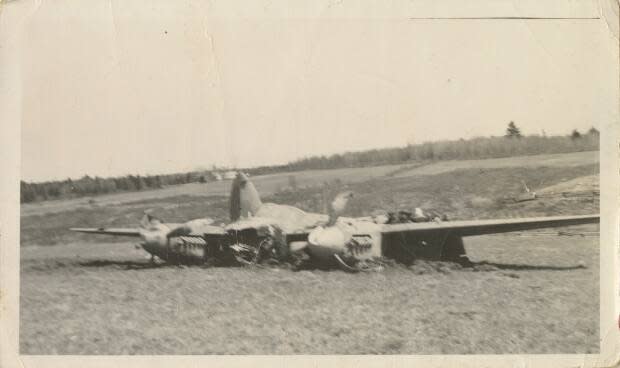
Whitworth's skill came to the forefront at that moment. He put the aircraft down in a field belonging to Tracy farmer Frank Bunker.
With the soft ground of early spring, Whitworth didn't drop his landing gear, fearing it would only topple the aircraft, instead bringing it in on its belly.
The Daily Gleaner of April 24 described the crash.
"The plane just missed a stone pile, cut through a line fence and plowed through the smooth, but soft field some 20 rods (100 metres) before it broke in two and stopped."
The newspaper said the crew were uninjured "other than a severe shaking up."
But the crash certainly caused a stir in the tiny rural community, and many people visited the site, while air force staff stripped and removed the badly damaged plane.
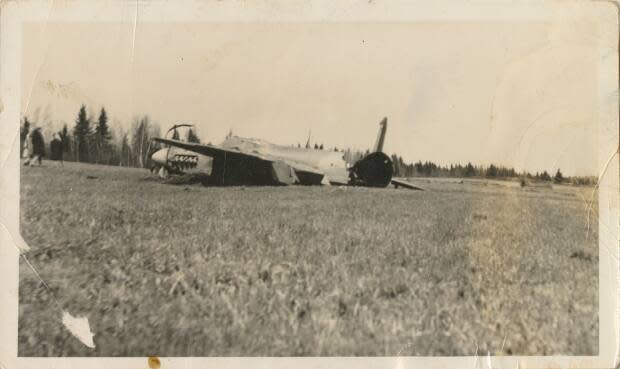
John McNarry said sometimes crews walked away from crashes that seemed almost impossible to survive.
He recalled the story told by one flight instructor of a crash involving a twin-engine bomber in Manitoba.
The instructor was out of the co-pilot's seat, leaving the aircraft in the hands of the student pilot while he attended to another student back in the fuselage.
"He said he heard the engine start to stumble but by the time he got to the co-pilot's seat, the engines had quit."
The Anson went down in thick evergreens and alders, but every crew member miraculously walked away from the crash.
Never saw combat
Neither Whitworth nor Chapman ever saw combat. The war in Europe ended soon after their crash, and having trained in Mosquitos, they were not going to fight in the Pacific.
The plywood aircraft had proven to be a poor fit for the hot and humid conditions there.
Whitworth did make it to England briefly, just long enough to board the troop transport RMS Andes in Southampton to sail home.
The ship that would return him to New Zealand had just brought a large group of British children home from Australia, where they had been sent to avoid the bombing Britain had sustained during the war.
He sailed with 1,475 other New Zealand airmen, many of whom likely trained in Canada. Some may even have been his students.
His ship arrived in New Zealand on Oct. 23, 1945, marking the end of Whitworth's Canadian adventure.
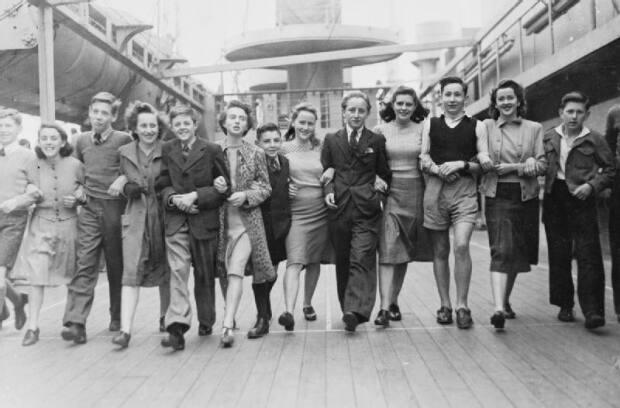
In 1943, U.S. President Franklin D. Roosevelt signed a letter that was sent to Prime Minister Mackenzie King, describing Canada as "the aerodrome of democracy" for its role in training Canadian, Commonwealth, British and American aircrew.
It was only years later that we learned that the phrase was not coined by the president, but rather by a ghost writer, none other than soon-to-be Canadian prime minister and eventual Nobel Peace Prize winner Lester B. Pearson.


